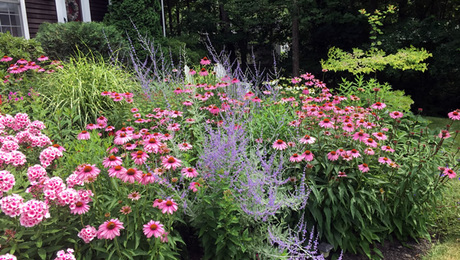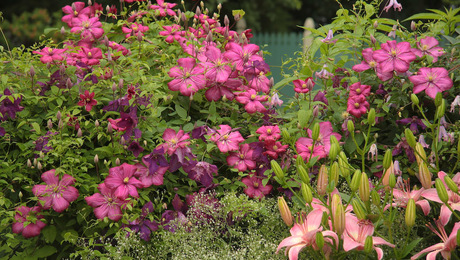
Photo/Illustration: Michelle Gervais
In the horticulture gardens at Michigan State University, bee balm (Monarda didyma cv., USDA Hardiness Zones 4-9) mingles with mallow (Lavatera cachemiriana, Zones 4-9) by a powder blue post. It’s a feminine, cottagey combo that’s universally appealing.
Welcome to the Fine Gardening GARDEN PHOTO OF THE DAY blog! Every weekday we post a new photo of a great garden, a spectacular plant, a stunning plant combination, or any number of other subjects. Think of it as your morning jolt of green.
Sign up to get new posts delivered to your inbox each morning so you’ll always remember to take a look, or subscribe to our RSS feed. We look forward to sharing our garden travels with you.
If you think you have a photo that we should share on the Garden Photo of the day, email us. Send hi-res images to [email protected] with GPOD in the subject line. We’ll only respond if we plan to use your photo.

















Comments
Been having trouble with all my bee balms in my latest gardens, grey fungus - lousy, short lived blooms, etc. Very unlike past experiences with this plant.
Any ideas?
Reggie - I've heard that it helps to thin out the stems of your plants in spring to increase air circulation. There are also a few new varieties that are supposedly more mildew-resistant than most.
I planted 'the perfect' monarda in the front of one of my gardens. 15" to 18" tall, gorgeous color (Fireball) and mildew resistant. Fast forward to mid-summer...48" on average and covered with mildew, but the color was fabulous! Thinning will be done early spring next year!
Log in or create an account to post a comment.
Sign up Log in